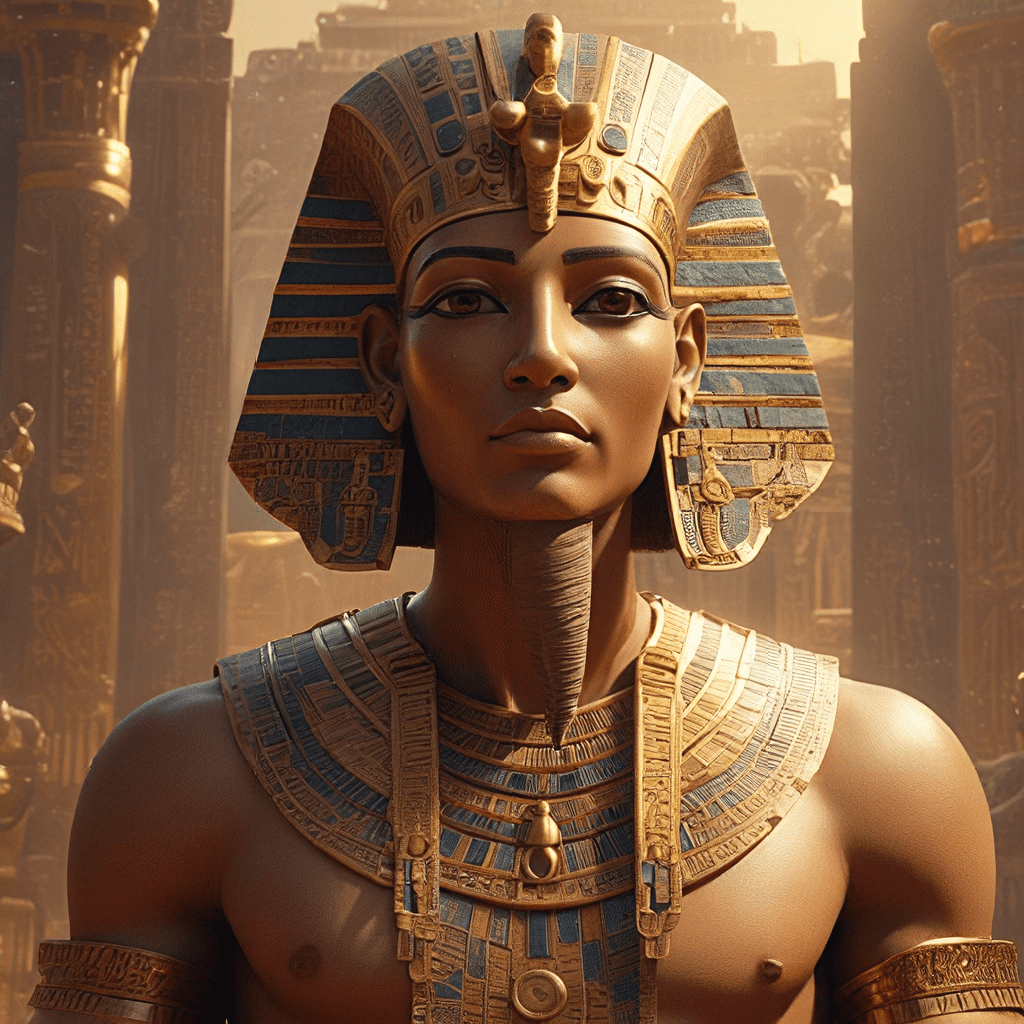1. Introduction: The Divine Craftsman
Ptah, a name that resonates with the very essence of creation in ancient Egyptian mythology, was revered as the divine craftsman, the architect of the universe, and the source of all knowledge. He held an esteemed position in the pantheon of gods, embodying the very principles of creation and craftsmanship. Ptah’s influence extended far beyond the realm of mythology, deeply impacting the lives and beliefs of the ancient Egyptians.
2. Ptah’s Role in Creation
In the grand narrative of the universe’s birth, Ptah played a pivotal role. He was believed to have brought the world into existence through the power of his divine heart and tongue. His heart, a symbol of thought and intention, conceived the universe, while his tongue, representing speech and creation, gave it form. This concept of creation through spoken word echoes the power of language and its ability to manifest reality. Furthermore, Ptah was responsible for establishing “Ma’at,” the cosmic order that governed the universe, ensuring balance and harmony. His creation wasn’t just a physical act; it was the establishment of a structured and harmonious cosmos.
3. Ptah as the Architect of the Universe
The Egyptians, renowned for their architectural prowess, saw Ptah as the ultimate architect. His knowledge and skill in design and construction were believed to be unparalleled. He was credited with the creation of the earth, the heavens, and all the structures that adorned them, including the grand temples and towering pyramids. These structures served as a testament to Ptah’s divine artistry and the Egyptians’ reverence for their creator god. His association with architecture was deeply ingrained in their culture, shaping their understanding of the world and their place within it.
4. Ptah as the God of Knowledge and Crafts
Ptah’s role wasn’t limited to creating the universe; he was also the patron of all knowledge and crafts. He was considered the source of all skills, the divine teacher who guided artisans, inventors, and craftsmen in their endeavors. His influence extended to all forms of creation, from the crafting of tools and weapons to the intricate designs of jewelry and the monumental art of sculpture. Ptah’s presence was felt in every aspect of Egyptian life, as he was seen as the ultimate guide for those who sought to create and innovate.
5. Ptah and the City of Memphis
The city of Memphis held a special significance in ancient Egypt, as it was Ptah’s primary temple city. This sacred site, known as the “House of Ptah,” was a center for religious ceremonies, rituals, and artistic expression. It was here that the Egyptians paid homage to their creator god, seeking his blessings and guidance. The city’s importance was further enhanced by the Ptah-Sokar-Osiris triad. This grouping combined Ptah’s creative power with Sokar, the god of the underworld, and Osiris, the god of the afterlife, symbolizing the cycle of life, death, and rebirth. This powerful triad emphasized the interconnectedness of creation, death, and the afterlife, highlighting Ptah’s enduring influence across different stages of existence.
6. Ptah’s Attributes and Symbolism
In Egyptian artwork, Ptah was typically depicted as a mummified figure, emphasizing his connection to the afterlife and the cycle of rebirth. He often wore the “atef” crown, adorned with a tall white “hedjet” crown, symbolizing Upper Egypt, and a red “deshret” crown, representing Lower Egypt. To further enhance his depiction, Ptah was often shown holding the “djed” pillar, symbolizing stability and endurance, and the “ankh” symbol, representing life and immortality. These symbols are a visual representation of his power, knowledge, and role in the creation and sustainment of life.
7. Ptah’s Relationship with Other Gods
Ptah occupied a significant position within the Egyptian pantheon. He was often associated with Atum, the self-created god, highlighting the interconnectedness of creation and the origin of the universe. His relationship with Ra, the sun god, was complex, with some accounts describing Ptah as the creator of Ra. Ptah also shared a connection with Thoth, the god of wisdom and knowledge, further underscoring his role as the divine source of knowledge and intellectual pursuits. These relationships demonstrate Ptah’s influence across various aspects of Egyptian mythology, shaping the understanding of creation, life, and the universe.
8. Ptah in Popular Culture
Ptah’s legacy extends beyond the ancient Egyptian world. His presence can be traced in modern art, literature, and film, serving as a source of inspiration for creators who seek to explore themes of creation, knowledge, and the divine. His image and symbolism have been incorporated into various artistic expressions, showcasing the enduring influence of this ancient deity. Moreover, Ptah’s story continues to resonate with individuals interested in mythology, ancient history, and the mysteries of the universe.
9. The Legacy of Ptah
Ptah’s legacy is deeply intertwined with the very foundation of ancient Egyptian civilization. He was more than just a god; he represented the very essence of creation, knowledge, and craftsmanship. His impact on their beliefs, art, architecture, and daily life was profound. Ptah’s influence is visible in the magnificent structures they built, the intricate designs they created, and the tales they passed down through generations. His story stands as a testament to the enduring power of mythology, showcasing how a divine figure can inspire and shape the beliefs and worldview of a civilization.




